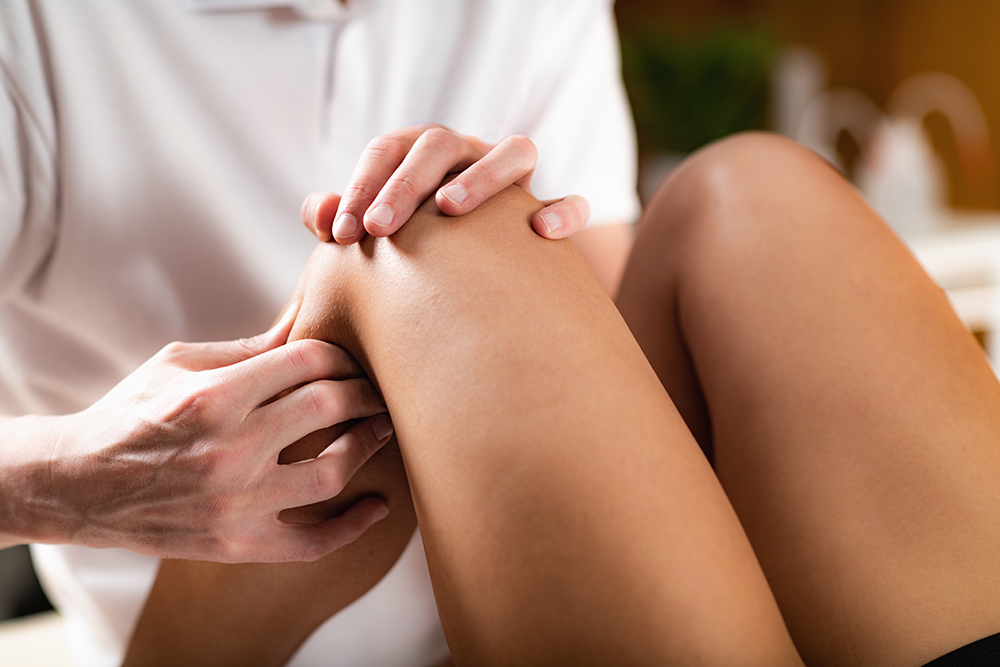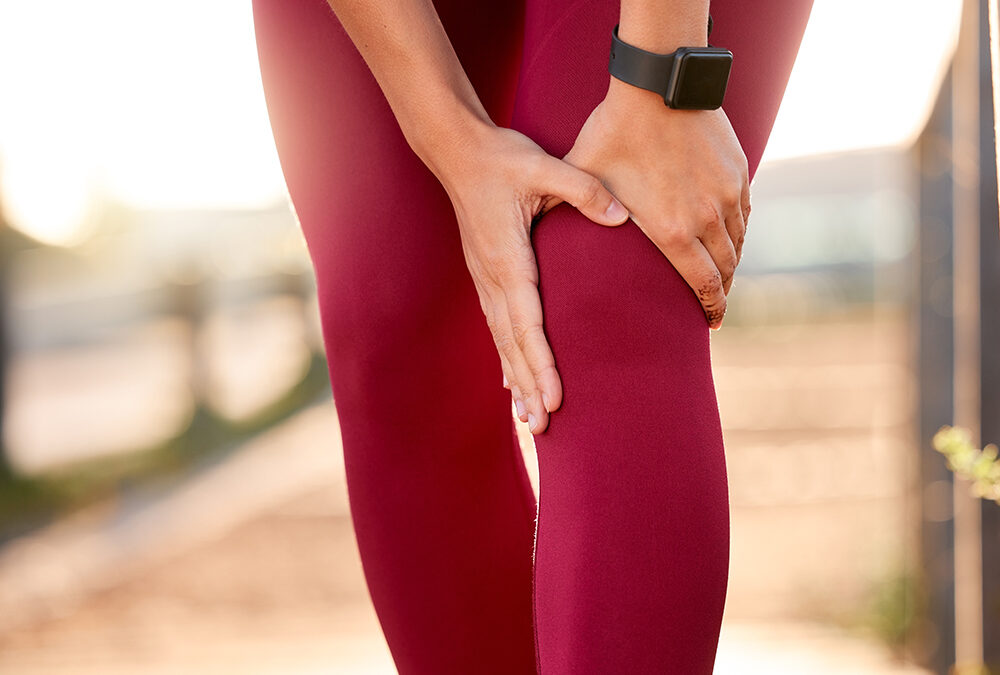Contents
The knee is a complex hinge joint formed by the intersection of three bones: the femur, the tibia and the patella. These bones are held together by ligaments and tendons and cushioned by cartilage. The key components of the knee joint are:
Femur — The thighbone is the largest bone in the body.
- Tibia — The shinbone is the larger of the two bones in the lower leg.
- Patella — The kneecap is a small, flat bone that protects the knee joint.
- Meniscus — The meniscus is a cartilage disc that acts as a shock absorber between the femur and tibia. There are two menisci in the knee:
- Medial meniscus
- Lateral meniscus
- Ligaments — Ligaments are tough bands of fibrous tissue that connect bones to bones. The four major ligaments of the knee are:
- Anterior cruciate ligament (ACL)
- Posterior cruciate ligament (PCL)
- Medial collateral ligament (MCL)
- Lateral collateral ligament (LCL)
- Tendons — Tendons connect muscle to bones. The patellar tendon connects the quadriceps muscles to the kneecap.
The knee is a vital joint that plays an important role in:
-
- Weight bearing
- Movement
- Stability
- Shock absorption
Injuries to the knee are common and can have a significant impact on your mobility and quality of life. Understanding the anatomy of the knee can help you prevent injuries and seek appropriate treatment if necessary.
Potential causes of sharp pain in the kneecap
When you’re experiencing a sharp pain in your kneecap, it can be frustrating and painful and limit your ability to do normal activities. Several things could be the culprit behind the sharp pain in your kneecap, including:
- Patellar tendinitis — Patellar tendinitis is inflammation of the tendon connecting your kneecap to your shinbone. This condition can occur due to repetitive motions in activities like running or jumping. Symptoms of patellar tendinitis can include pain or tenderness at the front of your knee. This pain or tenderness usually strikes when starting or stopping activities. It can also cause pain when bending your knee when you walk or squat.
- Patellofemoral pain syndrome (PFPS) — PFPS is a general term for pain that occurs around your kneecap, and is also known as runner’s knee. PFPS pain can be caused by overuse, muscle imbalances or improper tracking of your kneecap. It can be common in children. Symptoms of PFPS include a dull or aching pain that gets worse with activities like:
- Squatting
- Kneeling
- Climbing stairs
- Chondromalacia patella — Chondromalacia patella is caused by the softening and breakdown of the cartilage located underneath the kneecap. This breakdown can cause a grinding or aching sensation, especially when going up or down stairs.
- Knee bursitis — Bursitis is caused by the inflammation of the bursae, small fluid-filled sacs that cushion joints like the knee. The bursae help prevent friction and promote smooth movement of the joints. Knee bursitis can be caused by overuse, a direct impact to the knee, arthritis, or frequent and ongoing pressure like kneeling on hard surfaces. Knee bursitis pain can be felt on the front of the knee, the inside of the knee or the back of the knee. Symptoms of knee bursitis can include:
- Pain
- Swelling
- Tenderness in the front of the knee
- Meniscus tear — The meniscus is a C-shaped piece of cartilage located between the femur and tibia. It absorbs shock in the knee joint when you move and helps evenly distribute weight for smooth movement. If the meniscus tears, it can disrupt the knee’s natural alignment and cause abnormal pressure and pain in the knee. Inflammation from a meniscus tear and compensatory movements can also cause pain.
- Ligament injury — The most common ligament injury in the knee is to the ACL. Up to 200,000 ACL injuries happen every year. Knee ligament injuries can indirectly cause sharp kneecap pain. These injuries can disrupt your knee’s stability, which can cause you to have abnormal movement patterns and added pressure on your kneecap. Ligament injuries can be caused by a sudden twist or movement.
- Kneecap fracture — Due to the crucial role of the kneecap in the proper functioning of the knee, a kneecap fracture can have a significant impact on your mobility and ability to do daily activities. A kneecap fracture can happen due to a direct impact or fall. This fracture can cause severe and sharp pain, swelling, bruising, and difficulty bearing weight.
- Patella alta — Patella alta is also known as a high-riding kneecap. This happens when the kneecap is positioned too high in the knee, leading it to move improperly within the groove of the femur. This improper movement can cause increased friction and stress on the knee joint. Patella alta can cause:
- Pain
- Inflammation
- Cartilage damage
- Osteoarthritis — Osteoarthritis is a wear-and-tear type of arthritis that causes cartilage to degenerate in the affected joint. Knee osteoarthritis affects an estimated 365 million people worldwide. The degeneration of cartilage due to knee osteoarthritis causes bone-on-bone contact. Over time, the kneecap can become inflamed and painful as it moves over the damaged joint surface. The pain may be more noticeable in the morning or after long stretches of inactivity. Knee osteoarthritis causes:
- Pain
- Stiffness
- Reduced range of motion
- Rheumatoid arthritis — Rheumatoid arthritis is an autoimmune disorder that causes inflammation in the joints, including the knee. It affects 18 million people worldwide. The inflammation caused by rheumatoid arthritis can be worse with movement and accompanied by morning stiffness and swelling around the joint. Rheumatoid arthritis can cause:
- Swelling
- Pain
- Eventual joint damage
- Nerve pain — Conditions such as nerve compression or neuropathy can cause sharp, shooting pain, tingling, or numbness in the knee area. This pain can be caused by irritation or damage to the nerves around the knee or be due to referred pain from another area of the body. This pain often occurs along the nerve pathway and can be exacerbated by certain movements or positions.
- Gout — Gout is a type of arthritis caused by a buildup of uric acid crystals in the joint. Gout attacks can cause sudden, intense pain, redness and swelling in the affected joint. Sharp pain in the knee can happen when uric acid crystals accumulate, leading to inflammation and discomfort.
- Loose bodies — Sometimes, fragments of cartilage or bone can become detached and float within the knee joint. These are known as loose bodies and can interfere with normal joint movement. They can cause:
- Sharp pain
- Locking sensation
- Catching sensation
- Patellar dislocation or subluxation — When the kneecap moves completely out of its normal position, it’s known as a dislocation; a partial dislocation is known as subluxation. When the kneecap shifts out of place, it can stretch and damage surrounding tissue, causing sharp pain. The knee may also feel unstable or give way during movement. The area around the kneecap can also become swollen.
If you experience sharp knee pain, especially if it’s severe, persistent, or accompanied by swelling, redness or difficulty moving, it’s essential to consult a health care provider. They can diagnose the underlying cause of your pain and recommend appropriate treatment to help you recover and manage your symptoms effectively.
Physical therapy for sharp kneecap pain
Physical therapy can be a valuable tool in managing sharp kneecap pain. A physical therapist can use a variety of techniques to address the underlying cause of your pain and improve function, including:
- Manual therapy — Manual therapy is an umbrella term for a variety of hands-on techniques, including:
- Joint mobilization — Your physical therapist will use gentle, controlled movements to improve the movement of the knee joint. It can help reduce stiffness, boost the smooth movement of the kneecap, and alleviate pain by improving joint alignment and function.
- Soft tissue manipulation — By applying pressure and manipulation to the soft tissue, your physical therapist can help decrease muscle tightness, improve blood flow and relieve pain. This can help reduce the discomfort associated with sharp knee pain.
- Trigger point therapy — Trigger point therapy is a technique that focuses on releasing tight areas within muscles known as trigger points. Your physical therapist will apply pressure to specific points in the muscles around the knee that may be causing pain. This can help release muscle knots, reduce pain and improve the function of the affected muscles around the kneecap.
- Aquatic therapy — The buoyancy of the water supports the body and reduces stress on the knee joint. This allows you to do low-impact exercises that can help improve strength, flexibility and mobility. Aquatic therapy is a gentler approach to exercise.
Methods like these and other approaches work together to relieve pain, restore function and help you return to your daily activities.
Your path to sharp kneecap pain relief starts with Lattimore Physical Therapy
At Lattimore Physical Therapy, we are dedicated to helping you address sharp kneecap pain with an effective, personalized treatment plan tailored to your specific needs. Our team boasts over 30 physical therapists with a Certification in Orthopedic Manual Physical Therapy, bringing a wealth of expertise to provide you with the highest level of care. We are committed to helping you on your path to recovery.
Contact our team today for more information or to schedule an initial appointment.



